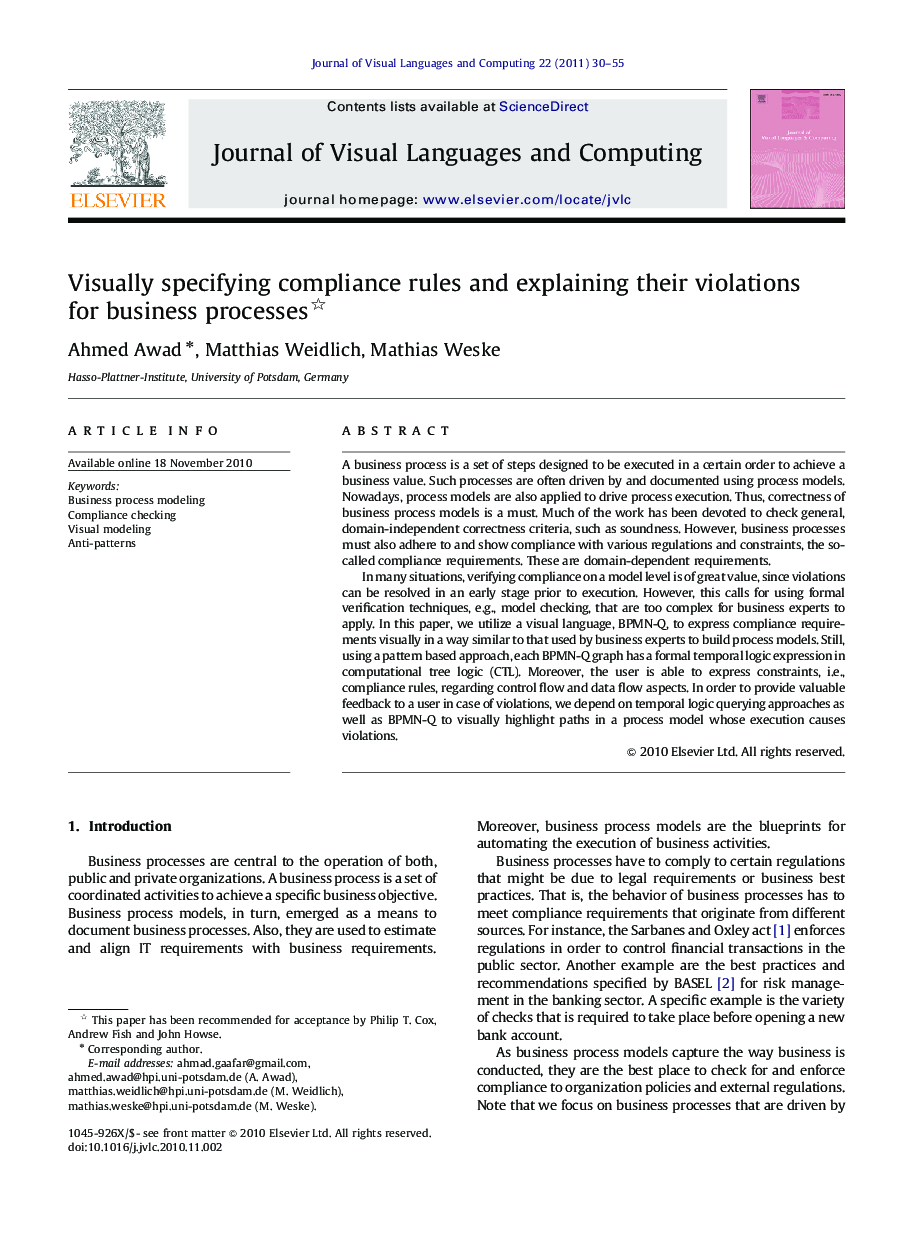| کد مقاله | کد نشریه | سال انتشار | مقاله انگلیسی | نسخه تمام متن |
|---|---|---|---|---|
| 523591 | 868384 | 2011 | 26 صفحه PDF | دانلود رایگان |

A business process is a set of steps designed to be executed in a certain order to achieve a business value. Such processes are often driven by and documented using process models. Nowadays, process models are also applied to drive process execution. Thus, correctness of business process models is a must. Much of the work has been devoted to check general, domain-independent correctness criteria, such as soundness. However, business processes must also adhere to and show compliance with various regulations and constraints, the so-called compliance requirements. These are domain-dependent requirements.In many situations, verifying compliance on a model level is of great value, since violations can be resolved in an early stage prior to execution. However, this calls for using formal verification techniques, e.g., model checking, that are too complex for business experts to apply. In this paper, we utilize a visual language, BPMN-Q, to express compliance requirements visually in a way similar to that used by business experts to build process models. Still, using a pattern based approach, each BPMN-Q graph has a formal temporal logic expression in computational tree logic (CTL). Moreover, the user is able to express constraints, i.e., compliance rules, regarding control flow and data flow aspects. In order to provide valuable feedback to a user in case of violations, we depend on temporal logic querying approaches as well as BPMN-Q to visually highlight paths in a process model whose execution causes violations.
Research highlights
► Visual specification of compliance rules as BPMN-Q behavioral queries.
► Compliance rules addressing control and data flow are addressed.
► Upon violation: compliance anti-patterns are generated as BPMN-Q structural queries.
► Matching structural BPMN-Q anti-pattern queries to process models results in indicating parts of the process whose execution causes a violation.
► For a subset of data flow rules, it is necessary to investigate process-specific causes of the violation. At that point, we issue functional temporal logic queries.
Journal: Journal of Visual Languages & Computing - Volume 22, Issue 1, February 2011, Pages 30–55